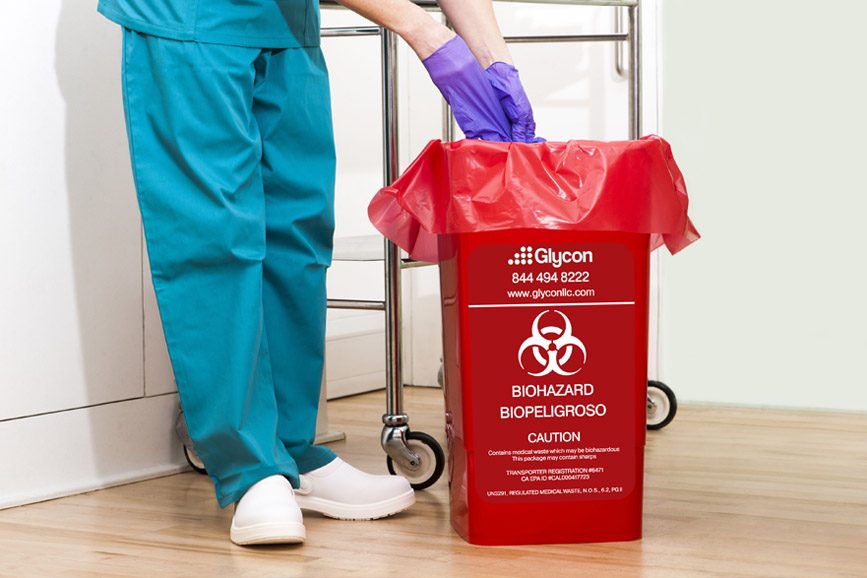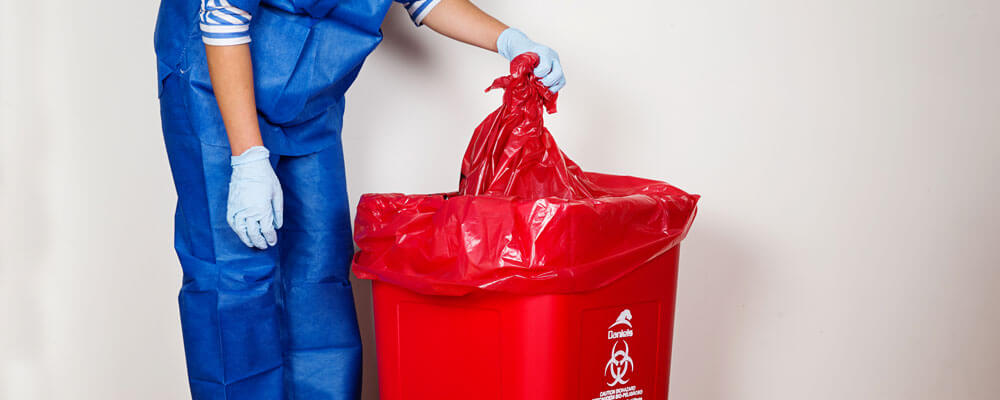Medical Waste Removal Proficiency: Where Service Quality Fulfills Wellness Criteria
Medical Waste Removal Proficiency: Where Service Quality Fulfills Wellness Criteria
Blog Article
Remain Ahead of Regulations: Professional Suggestions on Medical Waste Disposal
In a world where the health care market is continuously advancing, it is vital for clinical centers to remain in advance of laws when it comes to the proper disposal of medical waste. With strict guidelines and frequent governing adjustments, it can be challenging to navigate the complexities of this procedure. Nonetheless, with experienced advice, facilities can ensure compliance and mitigate risks associated with improper waste disposal. From understanding the various groups of clinical waste to carrying out the right collection and segregation methods, this conversation will certainly supply useful understandings and workable ideas to assist facilities remain in advance of policies in the ever-changing landscape of clinical waste disposal.
Understanding Clinical Waste Categories
Understanding medical waste groups is crucial for appropriate disposal and management in health care centers. Medical waste describes any waste generated by medical care activities that may position a threat to public health and wellness or the atmosphere. It is crucial to categorize clinical waste precisely to ensure its risk-free handling, treatment, disposal, and transportation.
There are a number of groups of medical waste that health care centers need to be knowledgeable about. The most typical categories consist of transmittable waste, pathological waste, sharps waste, pharmaceutical waste, and chemical waste. Each classification has certain standards and regulations for its proper administration and disposal.
Pathological waste refers to human tissues, body organs, or body components that call for unique handling and disposal. Drug waste makes up ended, extra, or polluted drugs that need cautious handling and disposal.
Remaining Up-To-Date With Regulatory Modifications
Staying present with governing adjustments is essential for healthcare centers to make certain compliance and appropriate monitoring of clinical waste disposal. medical waste removal near me. With laws continuously developing, it is important for healthcare centers to stay up-to-date to prevent charges, fines, and possible damage to the environment and public wellness
To stay ahead of regulative adjustments, health care centers should establish a system for surveillance and tracking updates. This can be done by subscribing to governing newsletters, going to workshops and conferences, and proactively taking part in sector associations. In addition, centers must designate a personnel or team responsible for staying educated and distributing information to appropriate stakeholders.
Regular interaction with regulatory companies is also crucial. Healthcare facilities need to establish connections with neighborhood, state, and government companies to ensure they recognize any type of changes in guidelines that might impact their waste administration techniques. This can be done through normal conferences, participation in public comment durations, and positive engagement with regulatory agencies.
Moreover, medical care centers need to think about partnering with waste management firms that concentrate on medical waste disposal (medical waste disposal services with WasteX). These companies are usually fluent in the most up to date guidelines and can supply advice and assistance to make sure conformity
Implementing Proper Collection and Segregation Techniques
To successfully take care of clinical garbage disposal, healthcare facilities must establish proper collection and segregation techniques based on governing standards. Applying these approaches makes certain the secure handling and disposal of possibly unsafe products, secures the atmosphere, and lessens the danger of infections and injuries to health care workers and the general public.
Correct collection and partition methods include making use of designated containers and labeling systems. Medical care centers must supply plainly labeled containers for different kinds of clinical waste, such as sharps, contagious waste, pharmaceutical waste, and non-hazardous waste. These containers should be color-coded and clearly significant to prevent confusion and advertise very easy identification.
Additionally, health care centers must train their staff on the proper procedures for collecting and setting apart medical waste. This includes enlightening them on the various kinds of waste, the appropriate containers to make use of, and the value of complying with policies and guidelines. Normal training sessions and refresher course programs need to be performed to guarantee that team member remain updated on finest methods.
Furthermore, medical care facilities must establish a system for routine collection and disposal of medical waste. This might involve partnering with accredited waste management companies that focus on clinical waste disposal. These firms will make sure that the collected waste is carried and thrown away in compliance with regulative needs.
Choosing the Right Disposal Techniques

Incineration is one of one of the most common and efficient approaches for dealing with specific kinds of clinical waste, such as pathological waste and sharps. It includes the regulated combustion of waste at heats, lowering it to ash. Nonetheless, incineration can launch harmful pollutants into the air and add to air contamination.

Other disposal techniques include chemical therapy, microwave treatment, and landfilling. Chemical therapy involves the usage of chemicals to sanitize and neutralize the waste. Microwave therapy utilizes microwave power to heat and decontaminate the waste. Landfilling involves hiding the waste in an assigned land fill area (medical waste disposal services with WasteX). Landfilling ought to be the last resort due to the prospective danger of contamination to dirt and groundwater.
Ensuring Conformity Via Documents and Training
After carefully taking into consideration the ideal disposal approaches pop over here for clinical waste, medical care facilities must make certain compliance with guidelines and lessen environmental effect by implementing effective paperwork visit the site and training procedures. This action is important in maintaining a safe and sustainable atmosphere for both medical care workers and the basic public.

Medical care workers who handle clinical waste should get suitable training on waste segregation, managing, and disposal procedures. By supplying comprehensive training, healthcare centers can equip their personnel to make informed decisions and lessen the danger of incorrect waste disposal.
Final Thought
In final thought, staying ahead of laws in medical waste disposal is important for health care facilities. medical waste removal. Recognizing the different classifications of medical waste, remaining upgraded with regulatory changes, applying proper collection and segregation approaches, selecting the suitable disposal approaches, and making sure conformity via documentation and training are all essential actions. By complying with these guidelines, medical care organizations can effectively handle and dispose of clinical waste in a accountable and secure fashion
From comprehending the various classifications of medical waste to applying the ideal collection and segregation methods, this conversation will give workable tips and beneficial insights to assist facilities stay in advance of policies in the ever-changing landscape of clinical waste disposal. - medical waste disposal services with WasteX
The most typical groups consist of infectious waste, pathological waste, sharps waste, pharmaceutical waste, and chemical waste. Healthcare facilities should provide clearly identified containers for different types of medical waste, such as sharps, contagious waste, pharmaceutical waste, and non-hazardous waste. Health care facilities must develop a thorough system to videotape and track all facets of clinical waste disposal, consisting of kinds of waste created, amounts, and disposal approaches made use of. Medical care employees that manage medical waste ought to receive suitable training on waste segregation, handling, and disposal procedures.
Report this page